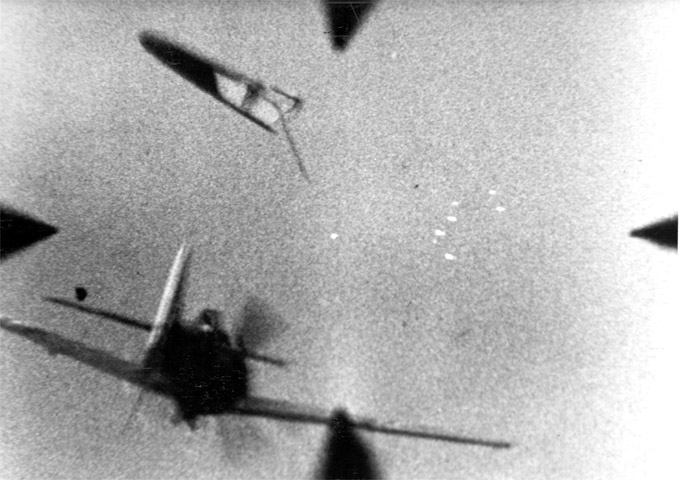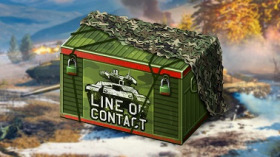
- For PC
- For MAC
- For Linux
- OS: Windows 10 (64 bit)
- Processor: Dual-Core 2.2 GHz
- Memory: 4GB
- Video Card: DirectX 11 level video card: AMD Radeon 77XX / NVIDIA GeForce GTX 660. The minimum supported resolution for the game is 720p.
- Network: Broadband Internet connection
- Hard Drive: 23.1 GB (Minimal client)
- OS: Windows 10/11 (64 bit)
- Processor: Intel Core i5 or Ryzen 5 3600 and better
- Memory: 16 GB and more
- Video Card: DirectX 11 level video card or higher and drivers: Nvidia GeForce 1060 and higher, Radeon RX 570 and higher
- Network: Broadband Internet connection
- Hard Drive: 75.9 GB (Full client)
- OS: Mac OS Big Sur 11.0 or newer
- Processor: Core i5, minimum 2.2GHz (Intel Xeon is not supported)
- Memory: 6 GB
- Video Card: Intel Iris Pro 5200 (Mac), or analog from AMD/Nvidia for Mac. Minimum supported resolution for the game is 720p with Metal support.
- Network: Broadband Internet connection
- Hard Drive: 22.1 GB (Minimal client)
- OS: Mac OS Big Sur 11.0 or newer
- Processor: Core i7 (Intel Xeon is not supported)
- Memory: 8 GB
- Video Card: Radeon Vega II or higher with Metal support.
- Network: Broadband Internet connection
- Hard Drive: 62.2 GB (Full client)
- OS: Most modern 64bit Linux distributions
- Processor: Dual-Core 2.4 GHz
- Memory: 4 GB
- Video Card: NVIDIA 660 with latest proprietary drivers (not older than 6 months) / similar AMD with latest proprietary drivers (not older than 6 months; the minimum supported resolution for the game is 720p) with Vulkan support.
- Network: Broadband Internet connection
- Hard Drive: 22.1 GB (Minimal client)
- OS: Ubuntu 20.04 64bit
- Processor: Intel Core i7
- Memory: 16 GB
- Video Card: NVIDIA 1060 with latest proprietary drivers (not older than 6 months) / similar AMD (Radeon RX 570) with latest proprietary drivers (not older than 6 months) with Vulkan support.
- Network: Broadband Internet connection
- Hard Drive: 62.2 GB (Full client)
From 6am GMT April 5th to 6am GMT April 7th
x4 RP gain for the first victory for all nations
-30% for purchase of Fw 190 and Ta 152 aircraft (Germany)
Destroy 100/25/13 enemy aircraft in Arcade/Realistic/Simulator battles respectively while flying any Fw 190 or Ta 152 aircraft
Complete this special weekend mission and earn 150.000  !
!
The Focke Wulf Fw 190 first went into battle in the summer of 1941. It was a highly advanced aircraft for it’s time and was given the nickname ‘Würger’ (Shrike), it was nicknamed "The Butcher Bird" because of its killing ability. The aircraft had speed and durability as its main strengths.
The Fw 190 was conceived in 1937 , the first prototype flew in June 1939. The aircraft was all metal with a stressed all-duralumin skin. The undercarriage was wide-tracked, which gave the Fw 190 much greater stability compared to the Bf 109 and allowed it to take off and land on runways that other German fighters such as the Bf 109 found difficult.
The first tests of the aircraft were in 1940 and few problems were discovered. The only real criticism that the pilots had was that the plane did not have sufficient firepower. The first combat model had a top speed of 388 mph from its 1600 hp engine. The first record of combat was with Spitfires in June 1941 where the Fw 190 performed well though the pilots complained of a lack of firepower. This criticism led to the Mk II version, which had two wing-mounted synchronised 20mm cannon and two MG 17 guns. The Mk II version had a top speed of 382 mph. This armament and speed made it a match for the Mk V Spitfire that was in service then.
 |
.jpg) |
| Fw 190 in an American fighter's sight | A US captured FW190 |
The Fw 190 had many variants that carried torpedoes, bombs, rockets, more powerful gun platforms and it was used as a guide system for the unmanned drone (Ju88) filled with explosives known as the Mistel. The introduction of the Mk IX Spitfire forced the designers of the Fw 190 to increase its speed even more. This resulted in the Fw 190D – 9’s which first saw service in September 1944. This variant had a larger nose that housed a larger, more powerful Junkers Jumo engine that produced 1,770 hp. Another version of the Fw 190D was the Ta 152 – the Ta being in recognition of Kurt Tank who was the guiding light for the whole Fw 190 design programme. The Ta 152H-1 had a maximum speed of 472 mph at 41,000 feet and was armed with one 30-mm and two 20-mm guns. However, the war ended before this variant could really prove itself in battle.
By the end of World War Two, 20,087 Fw 190’s had been built. At its height, 22 Fw 190’s were being produced in a day. Some German aces – Otto Kittel, Walter Nowotny and Hermann Graf among them – made over 100 kills in a Fw 190. When the war in Europe ended, the Luftwaffe had 1,612 Fw 190’s of which 809 were ground attack versions.
War Thunder team
.png)



